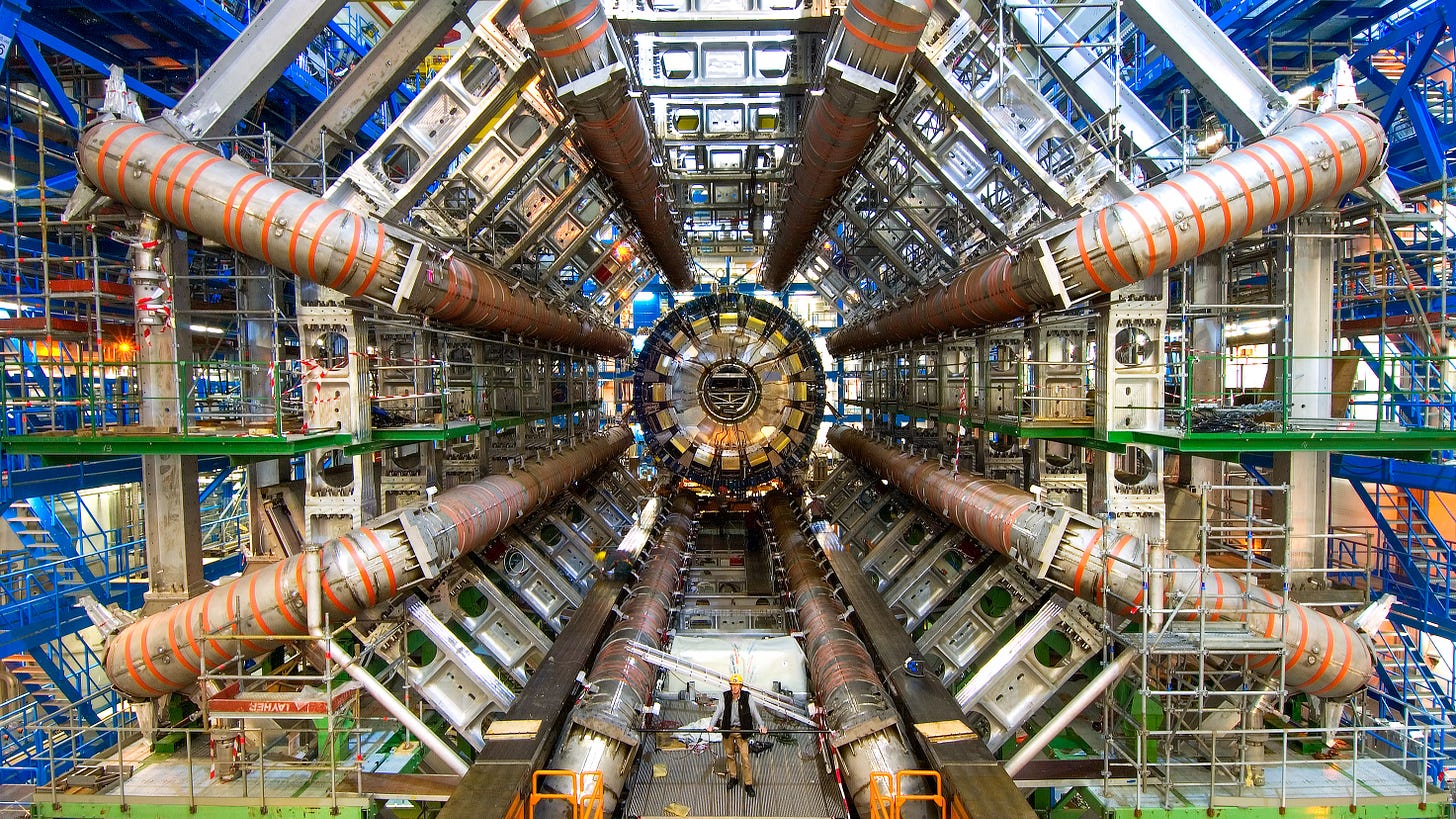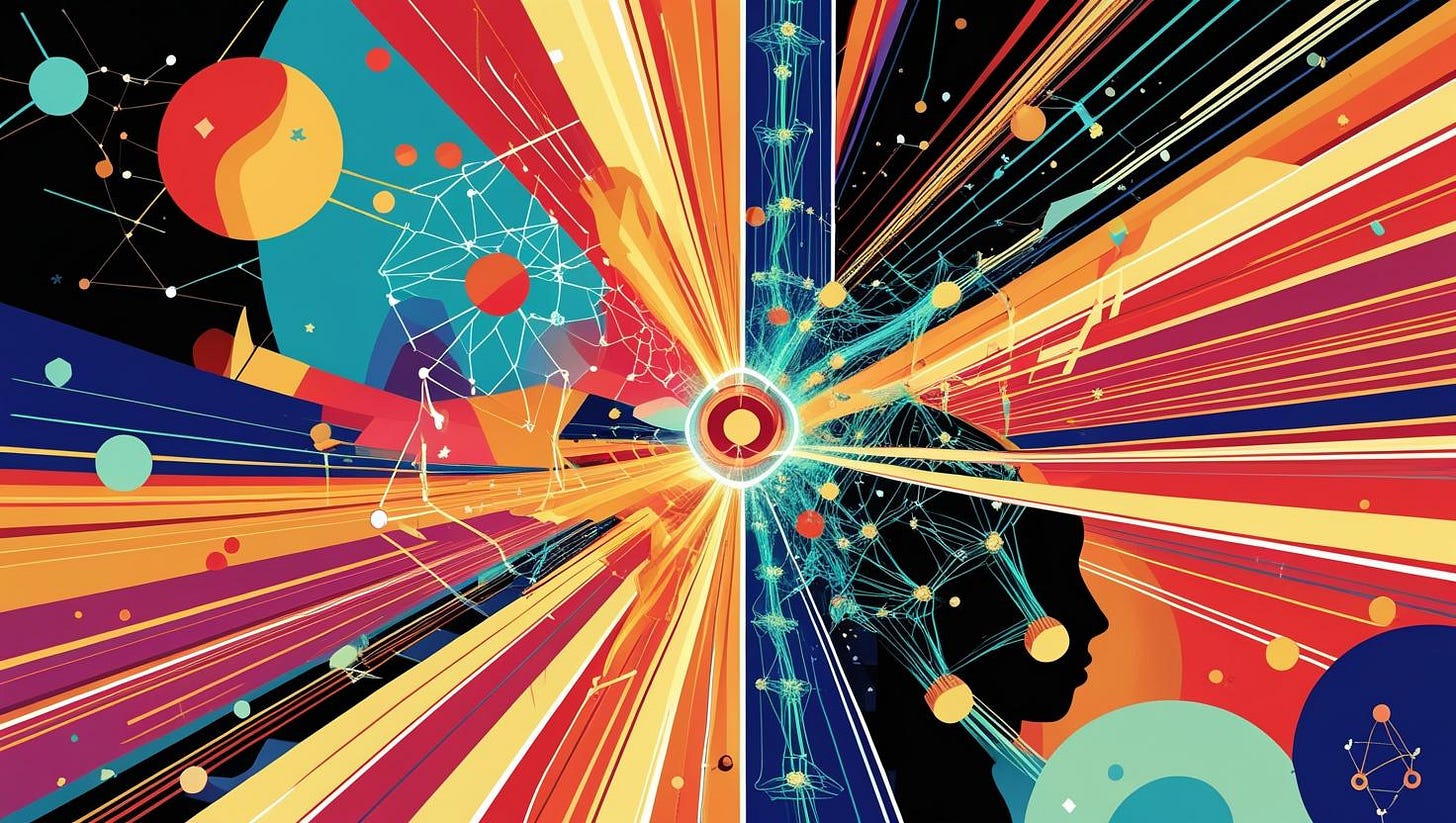AI for Physics Discovery
A conversation with Jesse Thaler: MIT Theoretical Physicist, National Science Foundation IAIFI Director

Over 100 years ago, Albert Einstein developed relativity, which revealed profound truths about the interconnectedness of space and time, and the vast amount of energy released when mass is converted into energy. This insight laid the foundation for a new generation of technologies, including the nuclear power plants that today provide 10% of the earth’s electricity.
Around this time, scientists such as Max Planck, Niels Bohr, Werner Heisenberg, Erwin Schrödinger, Paul Dirac and others pushed physics into new territory, revealing the “quantum” nature of reality at its smallest scales. Discoveries that are still being built upon today, to design everything from microprocessors, to emerging quantum computers and sensors that promise step-changes in computational efficiency, medical imaging, and navigation.
And yet, by some measures, the pace of discovery in fundamental physics has slowed. In 2012 humanity’s largest particle collider - a 27 km loop based in Geneva, Switzerland - confirmed the existence of the Higgs Boson – further shoring up the Standard Model of Physics – but leaving questions like quantum gravity unanswered. String theorists have proposed potential explanations, but face a landscape of plausible formulations that remain difficult to narrow down.
Enter Jesse Thaler. Director of the National Science Foundation’s Institute for Artificial Intelligence and Fundamental Interactions (IAIFI), and theoretical particle physicist at MIT, I recently had a chance to sit down with him and get a peek into the work he and his colleagues are doing to accelerate physics discovery with AI. From maximizing the discovery potential of data-generated from the Large Hadron Collider, to building companion tools that help physicists amplify their thinking.
In my hour-long conversation with Jesse we covered a range of topics, including:
The interplay between physics research and advancements in AI (diffusion models, efficient scaling, and beyond)
The current and future state of particle colliders like the LHC
The essential role of curiosity-driven research
Jesse’s “hot takes” on quantum mechanics, Many-Worlds, and the nature of reality
If you’re curious about the cutting edge of physics, or how physics is helping address major challenges in AI – like making large language models scale more efficiently – this conversation is for you.
Watch or Listen Now
Also available on:
Spotify: https://open.spotify.com/show/1wfOlAAqXXaIrXRwO5T71R
Apple Podcasts: https://apple.co/40sQCu9
Show Notes
Episode Links:
Jesse's Personal Website: https://jthaler.net/
National Science Foundation's IAIFI: https://iaifi.org/
MIT Department of Physics https://physics.mit.edu/
Jesse's MIT Faculty Page: https://physics.mit.edu/faculty/jesse-thaler/
Quantum Field Theory: https://en.wikipedia.org/wiki/Quantum_field_theory
CERN Large Hadron Collider: https://home.cern/science/accelerators/large-hadron-collider
Episode Chapters:
00:00 - Preview & Introduction
04:00 - Jesse's Journey Into Physics
05:49 - Curiosity For Understanding The Nature Of Reality
07:27 - What Is A Theoretical Particle Physicist?
09:34 - Quantum Field Theory
11:05 - Particle-Wave Duality
12:53 - What is the Large Hadron Collider?
15:04 - Data Generated From Particle Collisions
17:52 - How LHC Experiments Are Scheduled
19:24 - The Future of the LHC and Particle Colliders
26:29 - National Science Foundation's Institute for AI and Fundamental Interactions (IAIFI)
30:52 - How AI Is Accelerating Physics Discovery
40:42 - How Physics is Accelerating AI Discovery (Diffusion models and beyond)
48:27 - Physics Popcorn! – Einstein on Time
49:32 - Donald Hoffman's Interface Theory of Perception
50:48 - Many-Worlds Theory of Quantum Mechanics
53:12 - DeepMind's Demis Hassabis on Superintelligence for Science
54:03 - Human-Style Intelligence Alone Is Not Enough
55:17 - Advocate For Curiosity-Driven Research, Hire IAIFI Talent, Engage With AI




